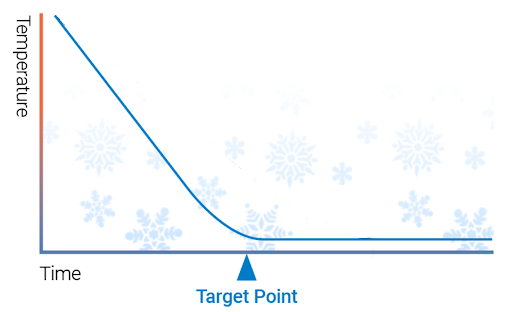Fat freezing is nothing new, but remains one of the hottest aesthetic treatments due to it requiring no down time, providing quick results, and being totally non-invasive unlike other fat reduction techniques like liposuction.
Fat freezing, or cryolipolysis, involves controlled cooling of the area at the temperature of around −11°C for the localized reduction of fat deposits, intended to reshape the contours of the body. The cooling causes cell death of subcutaneous fat tissue, without causing damage to the skin.
To date, there have been more than eight million fat freezing treatments performed worldwide, and it’s popularity is continuing to grow. As more people become aware of it however, the more suspect “home use devices” appear on the market.
What Are Fat Freezing Belts?
Fat freezing belts are devices typically made to wear around your waist, which are intended to induce the same cold-induced fat necrosis effect as a professional fat freezing machine would in a clinic. Some devices include small temperature pads, while cheaper ones simply contain “cold packs” or bags you cool in the freezer.

The Issues with Fat Freezing Belts
Temperature control
The temperature the skin is brought to by a professional fat freezing machine is around -11°C. The temperature of the device slowly cools throughout the treatment until it reaches the target coolness, and then stays at that temperature.
The temperature of fat freezing belts is often not controlled to a precise degree, and may become either cold enough to damage the skin, not cold enough to produce any of the desired results, or vary wildly throughout the treatment. Particularly with “cold pack” belts the pack will start at their coldest, and as the pack warms throughout the treatment the temperature will rise, which is the opposite of what would happen in a clinical treatment.

Limited treatment areas
Whereas professional machines like the Clatuu Alpha can treat almost any area of the body, fat freezing belts are only wearable around the waist. Some companies sell belts that are wearable in different areas, however you would have to buy a separate belt for each area you want to treat.
Untested & unproven
Fat freezing belts are both unregulated and untested. There is no academic research published which supports the claim that these belts can effectively target and reduce fat cells, and websites which sell these belts often cite papers which refer to results seen from professional machines.
Expense
Whilst you might think you’re getting an excellent deal with fat freezing belts, belts can cost between £50-£300 each, with each belt only targeting one area of the body. Fat freezing at a professional London clinic, using a well tested and proven machine, can cost as little as £50 for a 30-minute session.
After just one session, patients tend to find results will be visible after approximately 3 months, however if you follow a good diet with consistent fitness routines you can find the results appear quicker and last longer. With comparable costs over time, why spend money on the poorer quality and untested option?
Should I Buy a Fat Freezing Belt?
These untested and unreliable products are probably best left on the shelf.
Fat freezing is a widely available treatment in clinics across the UK, and you can rest assured that the treatment you are paying for is tested, proven, and delivered by a professional.
Clatuu Alpha
Precise & efficient.
Each treatment yields between 25-30% reduction of stubborn fat
Can treat almost any area of the body at any angle.
- Highly effective, affordable & pain free.
Fat Freezing Belts
Can treat one area of the body that the belt you bought is designed to treat.
Not proven to be effective.
Potentially unsafe due to inaccurate temperature control.
Unknown degree of fat reduction (if any).




